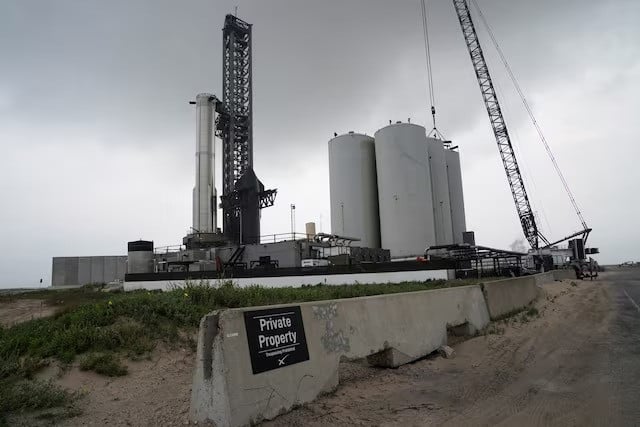
SpaceX's giant Starship rocket launched from south Texas on Thursday for its fourth test toward space to execute a tricky primary objective: survive a blazingly hot re-entry through Earth's atmosphere, the violent phase where the rocket broke apart during its last attempt.
The two-stage spacecraft, consisting of the Starship cruise vessel mounted atop its towering Super Heavy rocket booster, blasted off from the company's Starbase launch site near Boca Chica Village on the Gulf Coast of Texas. It is the latest trial mission in the test-to-failure rocket development campaign of Elon Musk's company.
Designed to be cheaper and more powerful than SpaceX's workhorse Falcon 9 rocket, Starship - standing nearly 400 feet (122 meters) tall - represents the future of the company's dominant satellite launch and astronaut business. It is due to be used by NASA in the next few years to land the first astronauts on the moon since 1972.
Each Starship rocket has made it farther in its testing objectives than previous tests before failing, either by blowing up or disintegrating in the atmosphere.
The rocket's first launch in April 2023 exploded minutes after liftoff some 25 miles (40 km) above ground. During the next attempt in November, Starship reached space for the first time but exploded soon after.
Read also: Musk sees fourth flight of SpaceX's Starship in 3-5 weeks
In its most recent flight in March, Starship made it much farther and broke apart in Earth's atmosphere as it attempted to return from space halfway around the globe.
The rocket's flight on Thursday is a repeat of its previous test but with the aim to get farther.
The rocket system's first stage, called Super Heavy, ignited its 33 Raptor engines to lift off, then was due to separate from the Starship second stage, which would then blast further into space.
Super Heavy is expected to re-ignite some engines and return toward the Gulf of Mexico for a "soft splash-down" to simulate a landing that would otherwise be on land.
Meanwhile in space, Starship is expected to trek around the globe heading for the Indian Ocean to make a second attempt to survive the intense heat of atmospheric re-entry - the crucial point at which it failed in March.
Read: SpaceX sets date for third test of the world’s most powerful rocket
The rocket is covered with hundreds of small black tiles designed to protect against the extreme heat encountered while diving through Earth's atmosphere at hypersonic speeds.
"The main goal of this mission is to get much deeper into the atmosphere during reentry, ideally through max heating," Musk, CEO of SpaceX, wrote on social media on Saturday.
Much is riding on SpaceX's development of Starship, relied upon by NASA as it aims to return astronauts to the moon in 2026 in a rivalry with China, which plans to send its astronauts there by 2030. China has made several recent advances in its lunar program, including a second landing on the moon's far side in a sample retrieval mission.
Despite Starship's development appearing quicker than other rocket programs, it has been slower than Musk originally envisioned. A Japanese billionaire who initially paid to fly Starship around the moon cancelled his flight last week, citing schedule uncertainties.
And Musk's drive to rapidly build Starship has endangered SpaceX workers in Texas and California, a Reuters investigation found.
1730959638-0/trump-(19)1730959638-0-405x300.webp)




















COMMENTS
Comments are moderated and generally will be posted if they are on-topic and not abusive.
For more information, please see our Comments FAQ